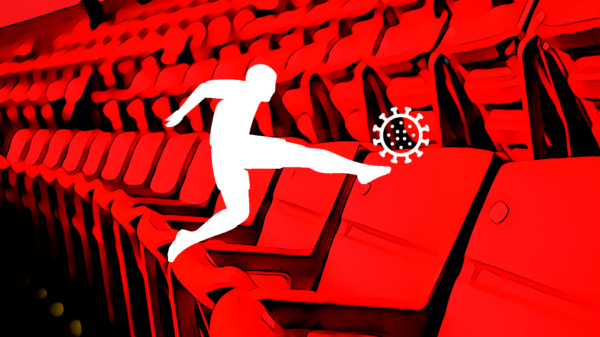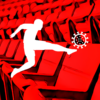James Sutherland writes a detailed tactical analysis about the Euro 2016 semi final that ended Germany 0-2 France.
France and Germany, the two tournament favorites, met in the semifinals. This match could prove to be the de facto final, with the winner advancing to face Portugal surely as the favorite. Germany dominated the match but were unable to create chances, while France converted the few chances they did get.
Lineups

Made using Tactical Pad
France (4-2-3-1): Lloris; Evra, Koscielny, Umtiti, Sagna; Matuidi, Pogba; Payet, Greizmann, Sissoko; Giroud
Germany (4-3-3): Neuer; Hector, Boateng, Howedes, Kimmich; Can, Kroos, Schweinsteiger; Draxler, Muller, Ozil
Didier Deschamps had the luxury of playing the same XI that ran Iceland off the field last weekend. No longer suspended, both Adil Rami and N’Golo Kante were questions to return to the team, but Deschamps decided to stick with Moussa Sissoko and Samuel Umtiti. Sissoko proved key to France’s defensive scheme, although Kante would come on later in the match to help shut down midfield.
Jogi Low, on the other hand, had several changes forced on him. Sami Khedira and Mario Gomez were out for injuries, and Mats Hummels for yellow card accumulation. Low shifted Benedict Howedes into central defense, and put young Joshua Kimmich in at right back. Moving away from the 4-2-3-1 we’ve seen for most of the tournament, Low shifted Germany to a 4-3-3. Thomas Muller came in from the wing to fill Gomez’s spot and Emre Can in midfield for Khedira.
Germany Dominates the First Half
The first ten minutes were shaky and open, with France seeming more comfortable in the high intensity atmosphere. Germany settled into the game, however, after ten minutes, and proceeded to dominate the first half. They controlled the ball and pinned France deep within their own half.
Germany was very fluid in possession, with tons of off ball movement. All three forwards played with positional freedom, particularly Ozil, who rarely stuck to his right side position. The fullbacks, Kimmich and Hector, provided width.
Focus on the Right Side
Germany focused on the right side during build up and in the final third. With fluid movements they were able to create overloads in the half space and combine to good effect.
Mesut Ozil could hardly be called a winger, even though he was slotted into the right wing. He roamed all over the pitch, creating overloads. When the ball was on the right, Ozil would normally drop deeper in the right half space. Thus the balancing movements of Can and Kimmich were vital. Both pushed higher, Can in the half space and Kimmich on the wing, providing forward options for Boateng and Ozil.
Here is an example. Ozil is deep in the half space, with Can further ahead. Kimmich is providing width and space for Boateng and Ozil to work in.
You can also see above the effect that the interchanging movement had on France’s defending. Since they were fairly man-orientated, this movement has pulled France out of its shape, leaving room for runs behind. Griezmann is marking Boateng on the ball, while Matuidi is closing down Ozil. Evra is watching Kimmich, and Muller is brilliantly occupying Umtiti. This leaves Can as a free man, with room in the half space to make a run. Payet should be marking him, but is instead ball watching.
With the direct pass to Can blocked by Payet, Boateng moves the ball to Ozil, who quickly pushes it out to Kimmich on the wing. Now France are in trouble; Evra closed down Kimmich, unknowingly opening room for Can. Umtiti isn’t close enough to stop the pass to Can, since he was marking Muller, and Payet is behind the play. Kimmich plays a good touch-on pass, and Germany are in behind with a chance.
With Payet and Evra on the right, it is understandable why Germany would look to build overloads. Payet had the tendency to be lazy in defense, and played very narrowly anyway, allowing Germany to easily overload the aging Evra. Even when Kimmich was 1 v. 1 with Evra, he was able to use his pace to beat the fullback and create chances.
France Pinned Back
Germany’s sustained possession allowed them to dominate the half and pin back France. Thus Germany’s possession wasn’t just an offensive tool, but a defensive one as well, shutting out France’s attack and not allowing them to create chances. France had trouble converting turnovers into counter attacks, and Germany was positioned well to counterpress and shut down French counters. The individual ability of German defenders, especially Boateng and Schweinsteiger, to counterpress also greatly impacted France’s ability to create chances.
France’s defending was also counterproductive to their offensive chances. France played a very passive 4-4-2 that applied little ball pressure. They were very reactive, following the ball and wherever Germany were going. This allowed the German center backs and Kroos time on the ball to comfortably pass and shift the defense. It also allowed Germany to gradually push France deeper and deeper within their own half, and close down any counter attacking lanes.
Above is a perfect example. The France defense is very deep, with the two forwards 20 yards into their own half. It is also slow and reactive, as you can see no one is putting immediate pressure on the ball. Although they are maintaining good vertical compactness, they are somewhat horizontally uncompact, particularly down the center.
Here those compactness issues come back again. There is just enough space between France’s two strikers, and two central midfielders, for Kroos to pick out a great pass to Ozil. The pass splits two lines of French defenders, and Ozil is running on goal.
There are four German defenders behind the ball above, as well as Kimmich on the wing. The sheer number, as well as expert skill and positioning, of the German defenders meant France had great difficulty creating counters. They were reliant on the dribbling ability of Griezmann, Payet and especially Pogba in the center to create breaks. Griezmann suffered the most from his deep positioning, unable to make his characteristic runs that open space and free up room for Giroud to hold up play.
France Still Weaken German Possession
Although they suffered offensively, defensively France was solid enough to keep Germany away from having good chances. Part of this was due to German issues (see below), but part was also due to good in game changes by Deschamps.
The most important was the new role Sissoko played. As the first half wore on, Sissoko became more and more man-orientated and variable in his positioning. Although most teams at this tournament have been man-orientated in midfield, Sissoko took it to a new level. In the last picture, he was all the way on the wing, marking Hector. At times he would do this, and drop into the backline, creating a 5 chain. Other times he would play as a conventional wide midfielder.
Perhaps the most interesting and important variation, however, of Sissoko’s game was his marking of Thomas Muller. As Germany’s nominal striker, Muller played very fluidly, dropping off the center backs and into midfield, or holding one up while Germany overloaded his side. This caused France some problems early on, as well saw above with the right side focus, so Deschamps shifted Sissoko onto him. Although Muller often dropped behind Pogba or Matuidi, Deschamps decided not to risk a central midfield and leave the middle open, and instead sacrificed the right wing and Sissoko.
Above you can see that Sissoko drops out of midfield to mark Muller, creating a French 5 chain.
This orientation played an important role in killing Germany’s possession. Muller was supposed to be the point man, someone Germany could find in the center to break through. His movement was also key to overloading France. But Sissoko was able to neutralize Muller, frustrating him and blocking Germany.
Overall France was successful in defending deep. With Germany not occupying space well and failing to penetrate, France’s defensive flaws were rarely exposed. Although they weren’t able to mount much serious offense after the first 10 minutes, France was banking on converting the one or two chances they did get, and then sitting back. That’s exactly what they did, Griezmann scoring a penalty against the run of play to end the first half.
Second Half
That penalty came against the run of play, and forced Germany to be more urgent. However, as noted above, their possession was flawed and incomplete. Although they were moving constantly and well, Germany failed to occupy space well, the lesser talked about part of possession. Istvan Beregi noted on twitter that this constant movement actually served to decrease the space Germany had to work in, as players occupied and moved into the same spaces.
One reason I don’t like player moving too much, instead of constant space occupation. Don’t decrease your own space. https://t.co/XyWbxvYfTs
— István Beregi (@szteveo) July 8, 2016
Thus as the game went on, not much changed. Germany held the ball for most of the second half but were unable to break past France. France was slightly more aggressive, and was able to break out more than they had in the first half. After 70 minutes Deschamps took off Payet for Kante, and shut the game down in midfield. Just a minute later, after good high pressure from France and a couple of bad mistakes from the German defenders, Griezmann pounced on a chance and put France up 2-0.
Conclusion
Both teams had flawed performances. Germany dominated the game from start to finish, moving France wherever they wanted and swamping them in midfield. It looked like Germany had 3 or 4 extra players on the field. They were defensively quite good as well, applying a fantastic counter press. In the end, though, their inability to create good chances from long periods of possession, and two silly defensive mistakes, cost them the game.
France, while not on the ball and not dictating the flow of the game, still played very well. They proved that they don’t need the ball to play well, defending for large portions effectively. Although they also had flaws, particularly in the passivity of their defense and the inability to counter, it was enough to win them the game, their first real challenge since losing to Germany in the quarters of the 2014 World Cup.
Written by James Sutherland
- Tactical Analysis: Sevilla 2-1 Real Madrid | Sevilla finally end the unbeaten streak - January 21, 2017
- Tactical Analysis: Borussia Dortmund 8-4 Legia Warsaw | Defence thrown out of the windows - November 27, 2016
- Tactical Analysis: RB Leipzig 1-0 Borussia Dortmund | Leipzing outpress Dortmund - September 18, 2016































































